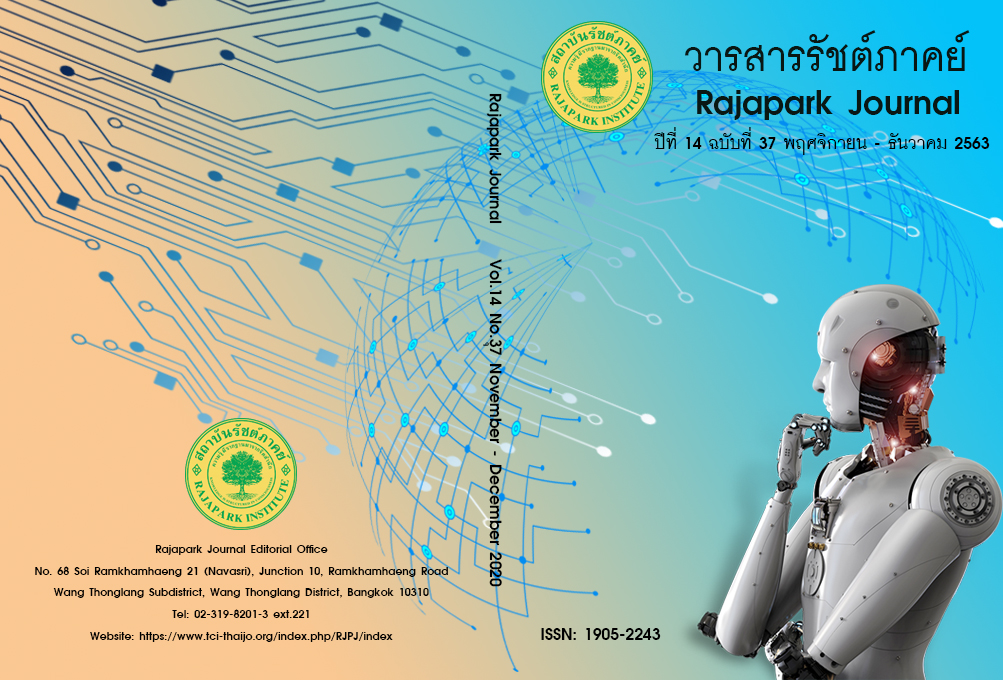Development of Creative Leadership Model of School Administrators Under Office of the Basic Education Commission
Main Article Content
Abstract
The purposes of this research were to develop of the creative leadership model of school administrators under the Office of the Basic Education Commission and to assess the suitability of the creative leadership style of school administrators. The study was a mixed methods research. It was a quantitative and qualitative research. The research method consists of 1) document study and interview with 7 experts 2) compile opinions from 17 experts by applying the Modified Delphi technique 3) feasibility study, suitability and the benefits of the model by focus group discussion (Focus Group) from 8 educational administrators and basic school administrators. Statistics used for data analysis were percentage, median, and inter quartile. The result of the research showed that the creative leadership model of school administrators under the Office of the Basic Education Commission have 10 components which were 1) vision 2) intelligence 3) positive attitude 4) Imagination 5) Flexibility 6) Leadership in creating new jobs 7) Team work 8) Personality 9) Interaction 10) Emotional Intelligence from pattern checking the developed models are suitable and have the possibility to be put into action.
Article Details
Views and opinions appearing in the Journal it is the responsibility of the author of the article, and does not constitute the view and responsibility of the editorial team.
References
Ash, R. C., & Persall, J. M. (2007). The school principal as chief learning officer: Seven exemplary schools. In D. Bonner (Ed.), Leading knowledge management and learning: Seventeen case studies from the real world of training Alexandria, VA: American Society for Training and Development. pp. 205-220.
Bardo. J. W., & Hartman. J. J. (1982). Urban society: A systematic introduction. New York: F. E. Peacock.
Bar-On, R. (1997). The Bar-On Emotional Quotient Inventory (EQ-i): Technical manual. Toronto, Canada: Multi-Health Systems.
Bass, B. M. (1985). Leadership and performance beyond expectations. New York: Free Press.
Bennis, W. (2002). Creative leadership. [ABI]. Bangkok: Chulalongkorn University.
Burns, J. M. (1978). Leadership. New York: Harper and Row.
Carter, L., Ulrich, D., & Goldsmith, M. (2005). Best Practice in Leadership Development and Organization Change: How the Best Companies Ensure Meaningful Change and Sustainable Leadership. Sanfrancisco: John Wiley & Sons, Inc.
Chamnan. S. (2010). Educational Leadership Theory and practice (2nd ed.). Rayong: PS. Printing.
Cho, S. H., Nijenhuis, J. T., Vianen, A. E. M., Kim, H. B., & Lee, K. H. (2010). The relationships between diverse components of intelligence and creativity. The Journal of Creative Behavior 44(2), 125-137.
Cooper, R. K., & Sawaf, A. (1997). Executive EQ: Emotional intelligence in leadership and organizations. New York: Grosset/Putnam.
Couto, R. A., & Eken, S. C. (2002). To give their Gifts: Health, community and democracy. Nashville: Vanderbilt University Press.
Garrett, P. (2009). Dialogue-A Proposal. Retrieved March 1, 2019, from http://www.david-bohm.net/dialogue/dialogue_proposal.html.
Guilford, J. P. (1959). Fundamental Statistics in Psychology and Education. New York: McGraw-Hill.
Guntern, G. (2004). The Challenge of Creative Leadership. (n.p.): Maya Angelou Press.
Hilgard, E. R. (1996). Introduction of Psychology. New York: Harcourt Brace and World Inc.
Jankaew, W. (2012). A creative leadership development model for the school directors of Suratthani Primary Education Service Area Office 3. Degree of Doctor of Education, Faculty of Education. Graduate school Rangsit University.
Keeves, J. P. (1988). Educational research, methodology and measurement: An international handbook. Oxford: Pergamon Press.
Labrecque, L. I. (2014). Fostering Consumer-Brand Relationships in Social Media Environments: The Role of Parasocial Interaction. Journal of Interactive Marketing, 28(2), 134-148.
Mayer, J. D., Salovey, P., & Caruso, D. R. (2004). Emotional Intellingence: Theory, Findings, and Implications. Psychological Inquiry, 15(3), 197-215.
Ministry of Education. (2012). Ministry of Education Policy. Retrieved May 5, 2017, from http://www.moe.go.th/inspecb/policy08.thm
Norman, L. M. (1971). Introduction to Psychology. Boston: Houghton Miffin Co.
Northouse, P. G. (2012). Leadership: Theory and Practice (4th ed.). Thousand Oaks: SAGE Publications.
Nelson, D. L., & Quick, J. C. (1997). Organization Behavior (2nd ed.). New York: Harper and Row.
Office of the Education Council. (2017). National Education Plan B.E. 2560 – 2579 (2017-2036). Bangkok: Prigwhan.
Organ, D. W., & Hammer, W. C. (1982). Organizational Applied Psychological Approach. United States of America: Business Publication, Inc.
Parker, G. M. (1990). Team players and teamwork: The new competitive business strategy. San Francisco, Calif: Jossey-Bass.
Parker, J. P., & Begnaud, L. G. (2004). Developing creative leadership. Portsmouth, N. H, Teacher Ideas Pr.
Puccio, G. J., Mance, M., & Murdock, M. C. (2011). Creative leadership: Skills that drive change (2nd ed.). Thousand Oaks, CA: Sage.
Runcharoen. T. (2007). Professionalism in Educational Management and Administration during The Educational reform era (5th ed.). Bangkok: LT Paste.
Runcharoen. T. (2010). Professionalism in Educational Management and Administration during the Educational reform era (Revised version) To reform the second round and evaluate the third round (7th ed.). Bangkok: kaofang.
Saarni, C. (1999). The Development of Emotional Competence. New York: Guiford Press.
Sanrattana, W. (2010). School Administrators: Three Dimensions of Professional Development Towards Effective Managerialism. Khon Kaen: Nana Wittaya Gallery.
Sinlarat. P. (2011). Creative leaders and productivity: new paradigms and the new leader of the Way Study (2nd ed.). Bangkok: Chulalongkorn University.
Sousa, D. (2003). The Leadership brain: How to lead today’s school more effectively. Thousand Oaks: Sage.
Spearman, C. (1904). “General Intelligence," Objectively Determined and Measured. The American Journal of Psychology, 15(2), 201-292.
Woodcock, M., & Francis, D. (1994). Teambuilding strategy. Hampshire: Gower Pu.


